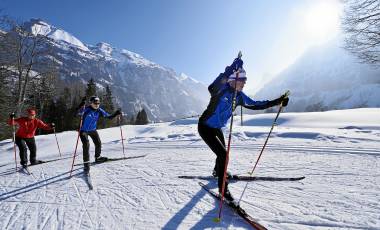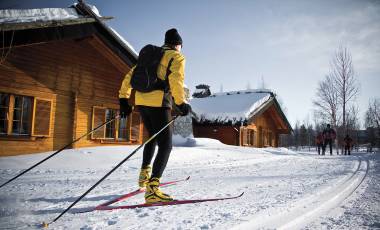Read time – 2 minutes
Cross-country skiing aficionado and Exodus leader, Mary Wray, gives us the low down on ski racing…
I am often asked “What’s the best thing about taking part in a ski race?” and my answer always remains the same: “Crossing the finish line!” You’re on a natural high as you glide to a halt and realise you’ve achieved something really special.
This elation soon melts in to pure relief as you give into the muscles that have been protesting for kilometres and finally sit down! You skied the best you could, conquered the conditions and revelled in the camaraderie of a major ski event. How many UK skiers can claim to have done this?
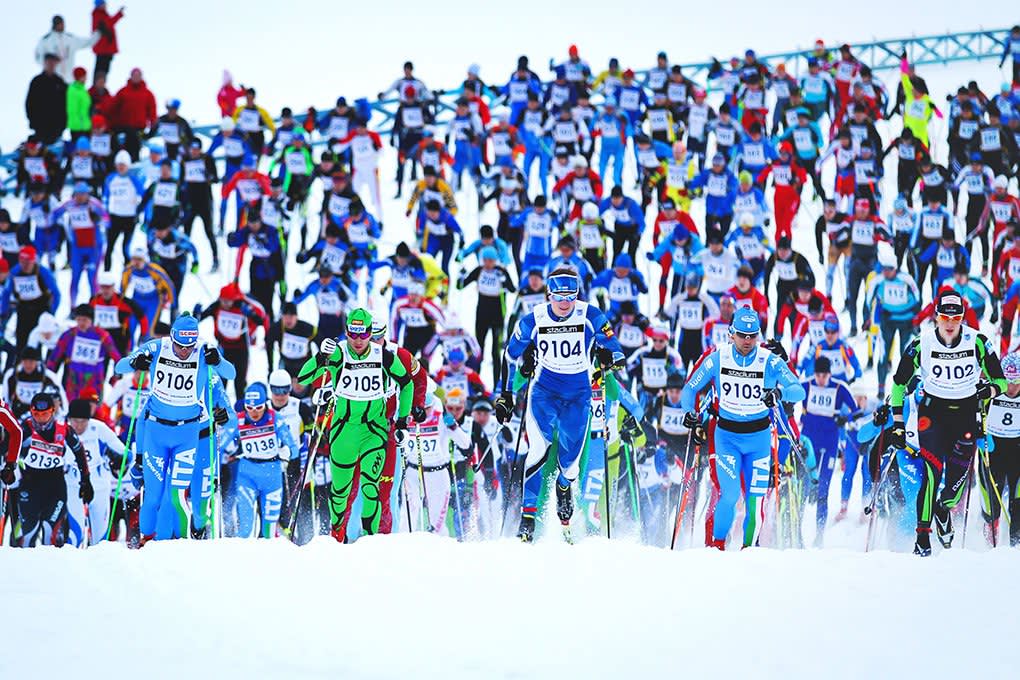 Finlandia Hiito Ski Race
Finlandia Hiito Ski Race So far I’ve competed in ten Worldloppet cross-country ski races, some more than once, and I am eager to compete again. That said, each time I stand on a chilly start line surrounded by Lycra-clad racers who look like they do this every weekend, I wonder what the hell I am doing there!
This uncertainty does not last for long though… as the gun goes off, the pace picks up and my attention turns to my technique as I carefully navigate through throngs of slower competitors. Frosty air fills my lungs and my heart starts to thump. There’s no better adrenaline rush for me!
What is Worldloppet?
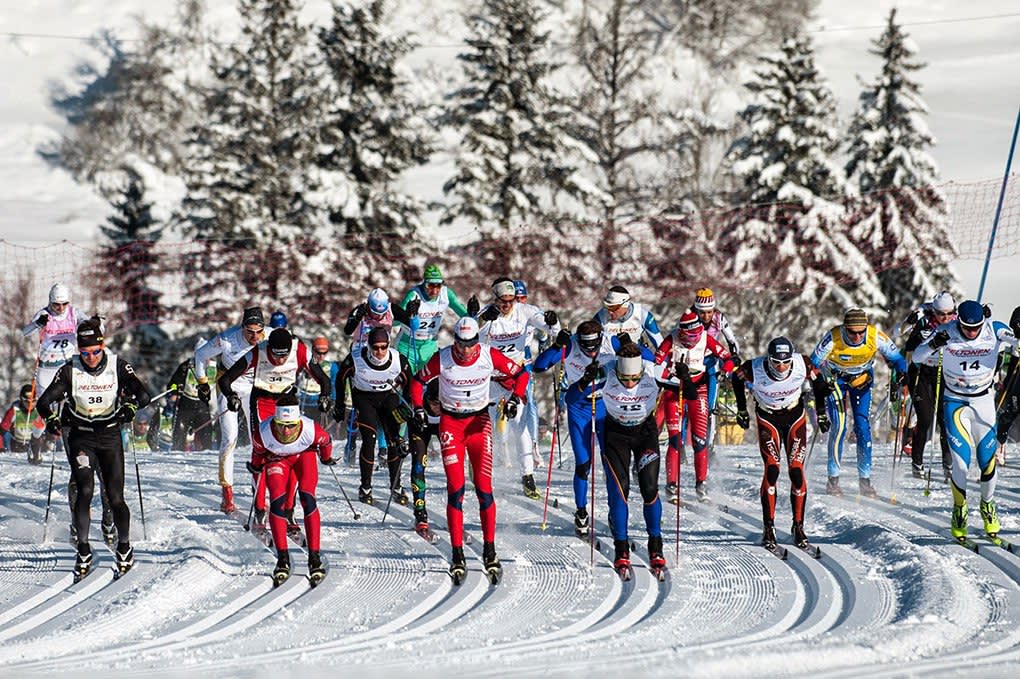 Transjurassienne Ski Race
Transjurassienne Ski Race Worldloppet is an addictive series of 15 cross-country ski races around the world. Taking place on four continents, Worldloppet races are held throughout Europe as well as in Japan, Australiaand North America. You buy a Worldloppet Passport and get it stamped at every race you complete and become a Worldloppet Master if you complete ten races, including one on another continent.
Who can enter Worldloppet races?
Anyone with the belief that they can complete the course in the specified time can enter a Worldloppet race. Competitors range from elite racers clocking up their FIS points and prizes to top club skiers and keen amateurs of all ages from around the world.
You might be hugely competitive, super-fit athlete with limited ski experience, or you might be an averagely fit, experienced skier looking for a personal challenge – I was in the latter category when I began.
I upped my training with a mix of running, roller skiing and walking, and went on plenty of cross-country skiing holidays that included expert race tuition.
My Top Tips for Ski Racing
 Transjurassienne ski race at 76 km
Transjurassienne ski race at 76 km Training: Good preparation is key to a successful ski race. Roller skiing is the best preparation for cross country skiing and many Nordic ski clubs around the UK offer beginner courses. Nordic walking, running and tailored gym sessions will all stand you in good stead for the challenge ahead.
Start Slowly: Don’t start off too fast; you won’t win the race going flat out in the first few kilometres. Instead, find a comfortable pace, focus on your technique and then, once everything’s going smoothly, put your foot down!
Regular Refreshments: It is important to drink and eat something at every refreshment station to keep your energy levels up. Carry your preferred drink with you in a water bottle and keep some energy snacks to hand in case you flag in between pit stops.
Tried & Tested Kit: It is important to wear comfortable clothes and boots. If tempted to buy new gear before the race, make sure you thoroughly put it through its paces before wearing it on race day – there’s nothing worse than unexpected chafing!
Don’t Let the Cold Put You Off: Expect to feel a little cool at the start, you’ll rapidly warm up once on the move. You don’t want to add an extra layer that will inevitably cause you to lose valuable time as you struggle to remove it while on the course.
Relax & Enjoy Yourself: If all goes to plan, you’ll have a fantastic time. However, there are many factors that can affect race performance, notably adverse weather conditions that you cannot prepare for, lack of wax on your skis, and sometimes even the other racers! The main thing is to just relax and focus on being the best skier you can be on the day.
View our cross-country skiing holidays below and get some practice in for your ski race.
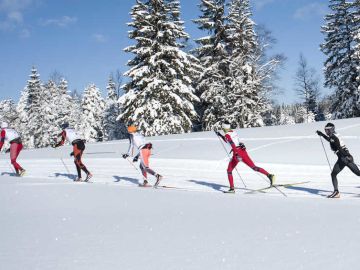
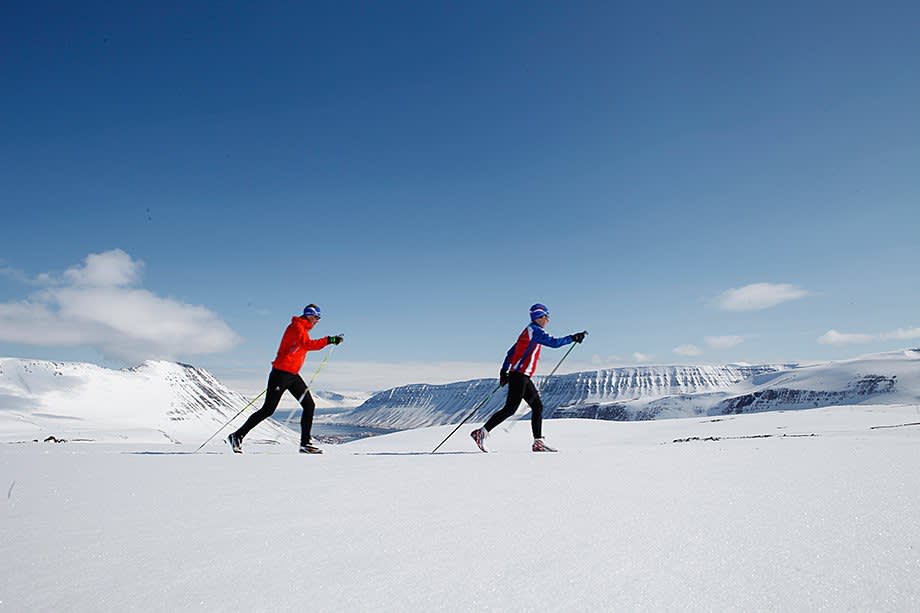 Icelandic ski racers
Icelandic ski racers

